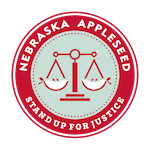As the trial of Derek Chauvin has captured the attention of many people across the country and around the world, we are feeling a deep sense of grief. One single trial or one verdict cannot erase the rightful grief, fear, and anger experienced by Black men, women, and children across the country, as our communities are ripped apart. The fact that police killings disproportionately impact Black community members is a clear indication of a deep-rooted systemic problem.
We cannot be a welcoming and inclusive community while simultaneously being a community that allows Black men and boys to be brutalized and killed with no regard for their lives. Together we must speak out against deadly racism that has been a part of our country’s history for too long.
Today’s verdict, which found Derek Chauvin guilty on all accounts in the murder of George Floyd last May, was a small step for police accountability, and we hope, one day, to be able to have a conversation about healing as a community. But we cannot begin that healing process while our community members continue to be treated as though their lives do not matter. Justice is a necessary component of healing and lasting peace in our communities, and we must continue to work towards justice and building welcoming communities where everyone can feel safe, respected, and valued, no matter their skin color, socio-economic, or cultural background.
The Chauvin trial has affected many people across the country, including in Nebraska. Individually and collectively, people will express and process pain, grief, and outrage in different ways, including creating public pressure in the streets. Our neighbors are crying out for their voices to be heard and for meaningful change to put an end to systemic violence that continues to afflict communities. The public outrage is valid and necessary to move the conversation on racial equity forward in our homes, workplaces, and neighborhoods, and to prompt continued learning and focused action to create change.
Here are additional resources to further the dialogue.
- Stay safe. Steps for Protesting Safely in the Midst of the Pandemic
- On our blog: Let’s listen to Black community members today and every day
- Racial equity tool: Principles for Racially Equitable Policy Platforms
